Vernier Calipers: A Love and Hate Relationship
Jan 2, 2025
Motivation
Permalink to “Motivation”A common tool I need is a set of calipers to take accurate measurements. I use them for woodworking, 3D printing, jewelry, and pretty much everything else. It's not an uncommon tool either. Even still, I have yet to be satisfied in finding a pair that meets my expectations, in some cases they don't even do what they advertise to do.
Why Vernier Calipers?
Permalink to “Why Vernier Calipers?”I'll specifically be looking at the old school vernier calipers which uses a secondary set of markings on the sliding part of the caliper to refine your measurements with decimal precision; most vernier scales advertise 0.05mm accuracy. This claim to accuracy is often a complete lie, in some cases more agregiously than others. Sure digital calipers offer more precision but I find them always draining in batteries and needing replaced. Dial calipers avoid the batteries but are fragile and sensitive to shock which also can damage the digital calipers too. Sometimes the simplest solution is the best, which is why I choose to love vernier calipers over their dial and digital counterparts.
Aren't there Plenty of Good Vernier Calipers out there?
Permalink to “Aren't there Plenty of Good Vernier Calipers out there?”Most good vernier calipers are steel, usually hardened steel. This means they can easily mar wood, plastic, and even metal surfaces. So I won't be using steel calipers on any of my projects, even if it would be perfect in a machine shop. I wouldn't be opposed to brass, but these often don't meet other requirements.
The Good
Permalink to “The Good”I do own one single good pair of vernier calipers, but I can't seem to find a successor. Not only are they old and slightly worn, but I would like to have multiple pairs, one in the wood shop, one at my desk, one with my jewelry equipment, maybe even a bedside pair. But I have yet to find a suitable replacement.
The below image shows this specimen. Notice how the vernier scale is accurate in that in the closed position the 0 on the vernier scale and the 0 on the ruler are lined up. Furthermore, you can see that the 10 on the scale also lines up as it should always when 0 is.
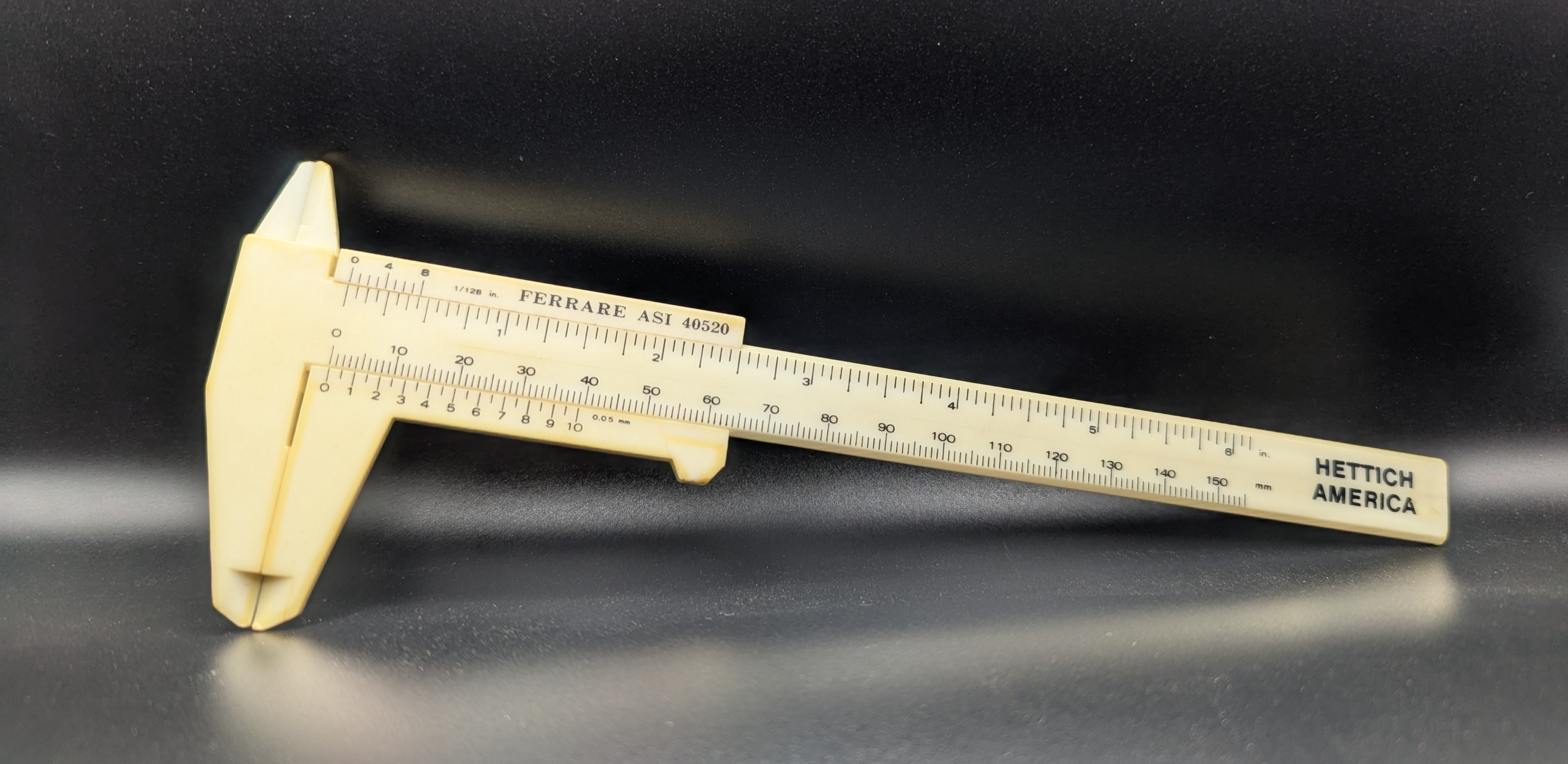
In the below photo we can also see how the caliper end has the metal slide perfectly lined up in the back. This is useful when measuring the depth of an item and it's alignment is key for accuracy. The slight protrusion in the photo is just because of the way I had to prop it up to take the photo, but even then the discrepancy pictured is minor for the type of work I'm doing.
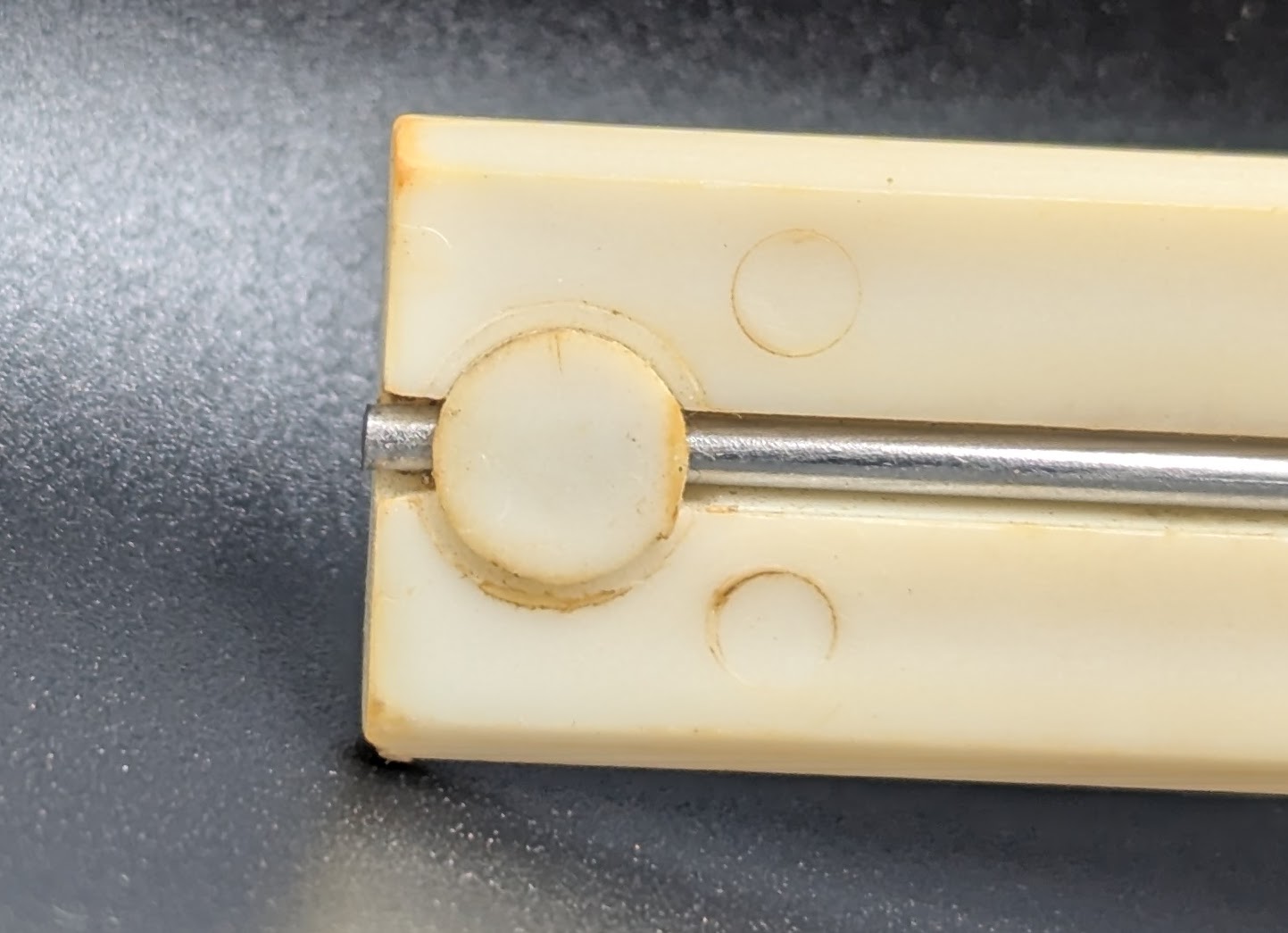
The Bad
Permalink to “The Bad”At one point I had gone on Amazon and ordered some extra plastic vernier calipers. From the product photos they looked mostly similar to the ones I had and I had high expectations, but I would find only disappointment when I received them. Not only were they all incredibly sloppy, which would lead to very inaccurate measurements when trying to use the vernier scale, the vernier scale itself wasn't even printed correctly. Look in the photo below how the 0 doesn't line up when closed, and that the 10 is even further misaligned than the 0 is, meaning all of the other numbers in between are inaccurate too.
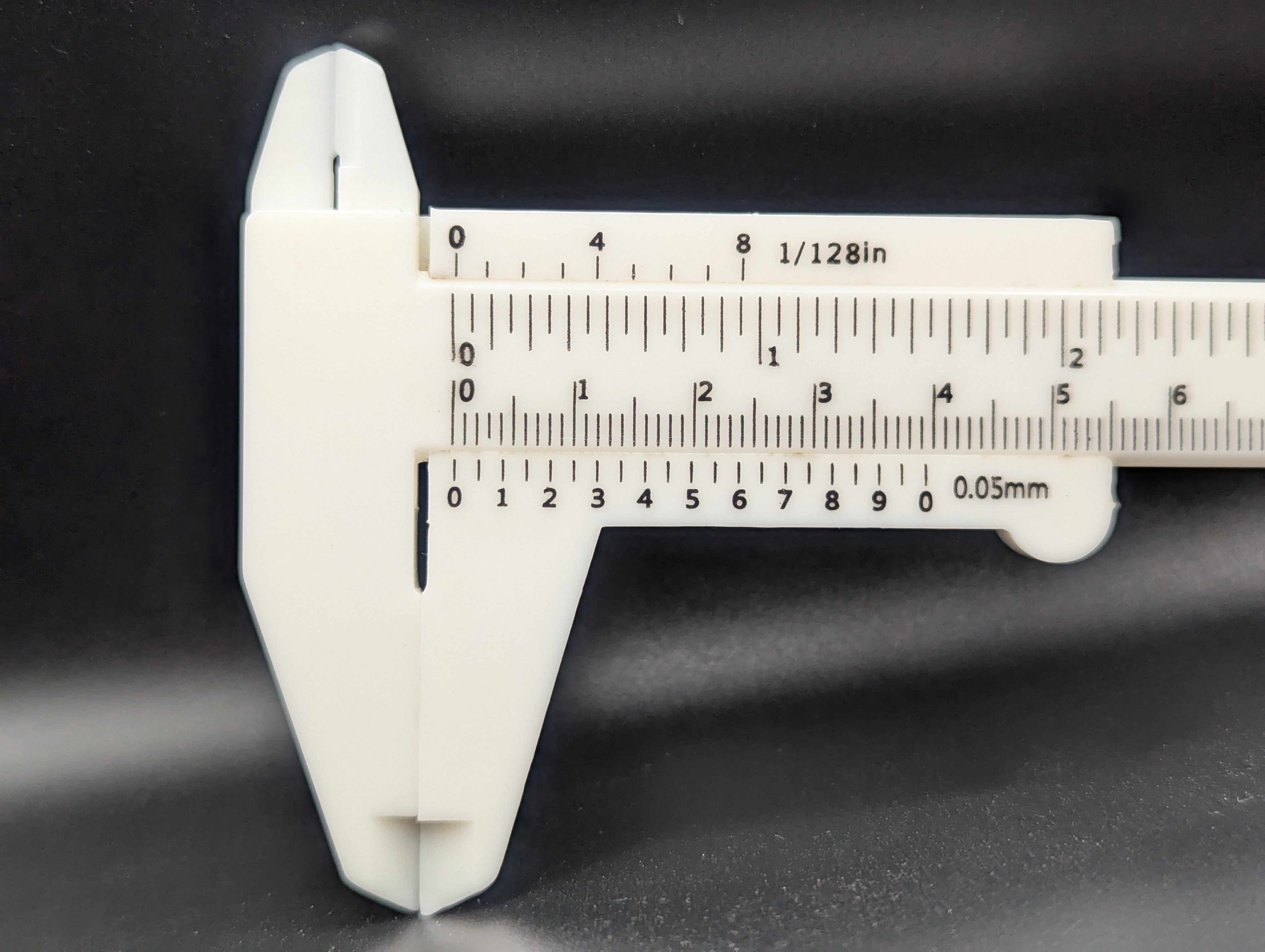
Furthermore, see below how far off the metal end is from the plastic end, any depth measurements will be a full millimeter off!
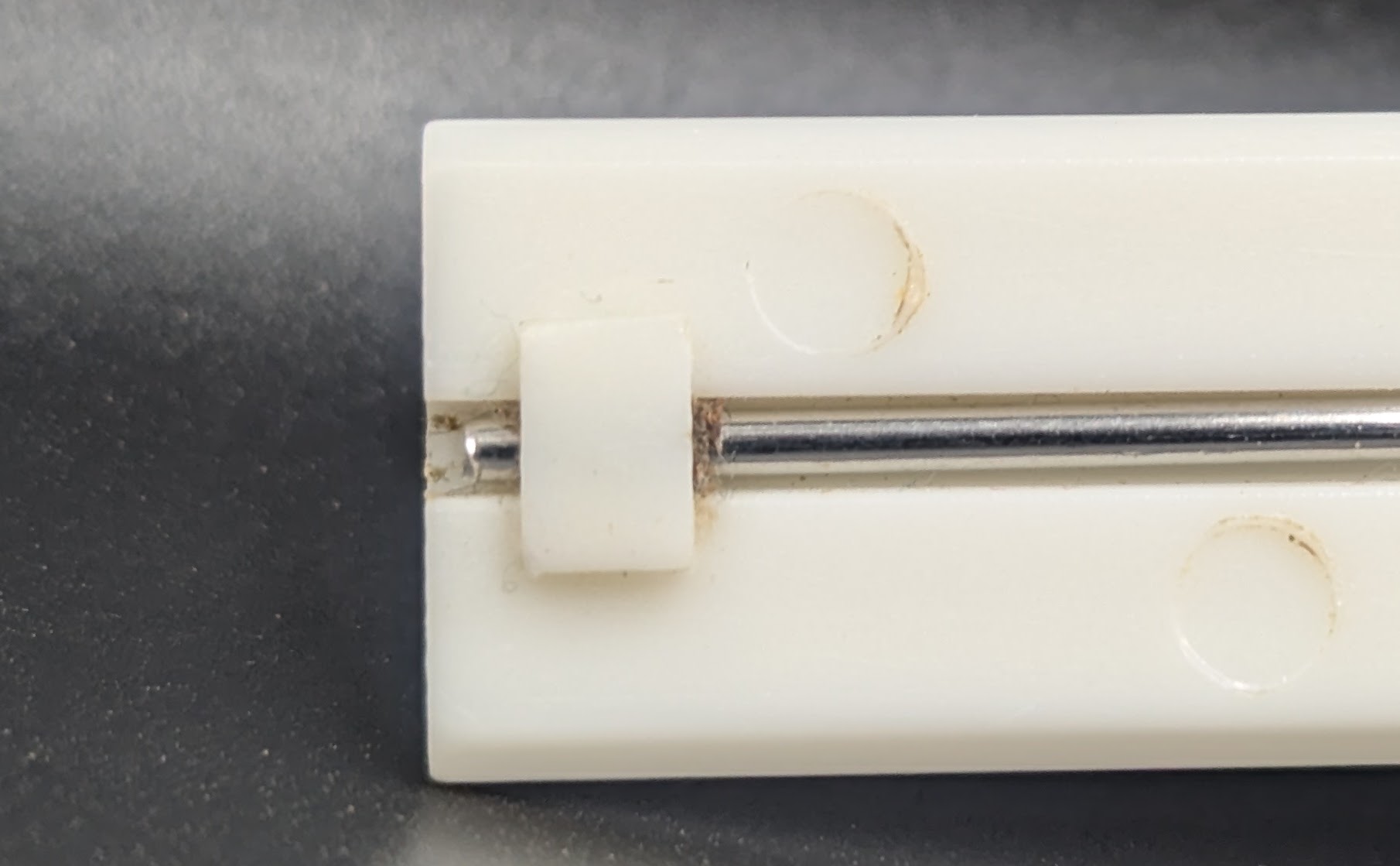
Truth be told, I do still use these calipers from time to time. I have to be mindful of their shortcomings though, and I can't rely on them for sub-millimeter precision.
The Ugly
Permalink to “The Ugly”One date night my partner and I were biding time for our dinner reservations in a Joann Fabrics. The cutest pair of mini calipers caught my eye and I just had to buy them. Now I'm told it's bad manners to inspect shop tools while on date nights so I trusted that by being sold in a reputable physical store they would at least be of acceptable quality, surely no worse than the Amazon pairs. So you could believe my horrors when the next day I looked more closely at the pair and realized that not only were they bad, the vernier scale wasn't even a vernier scale.
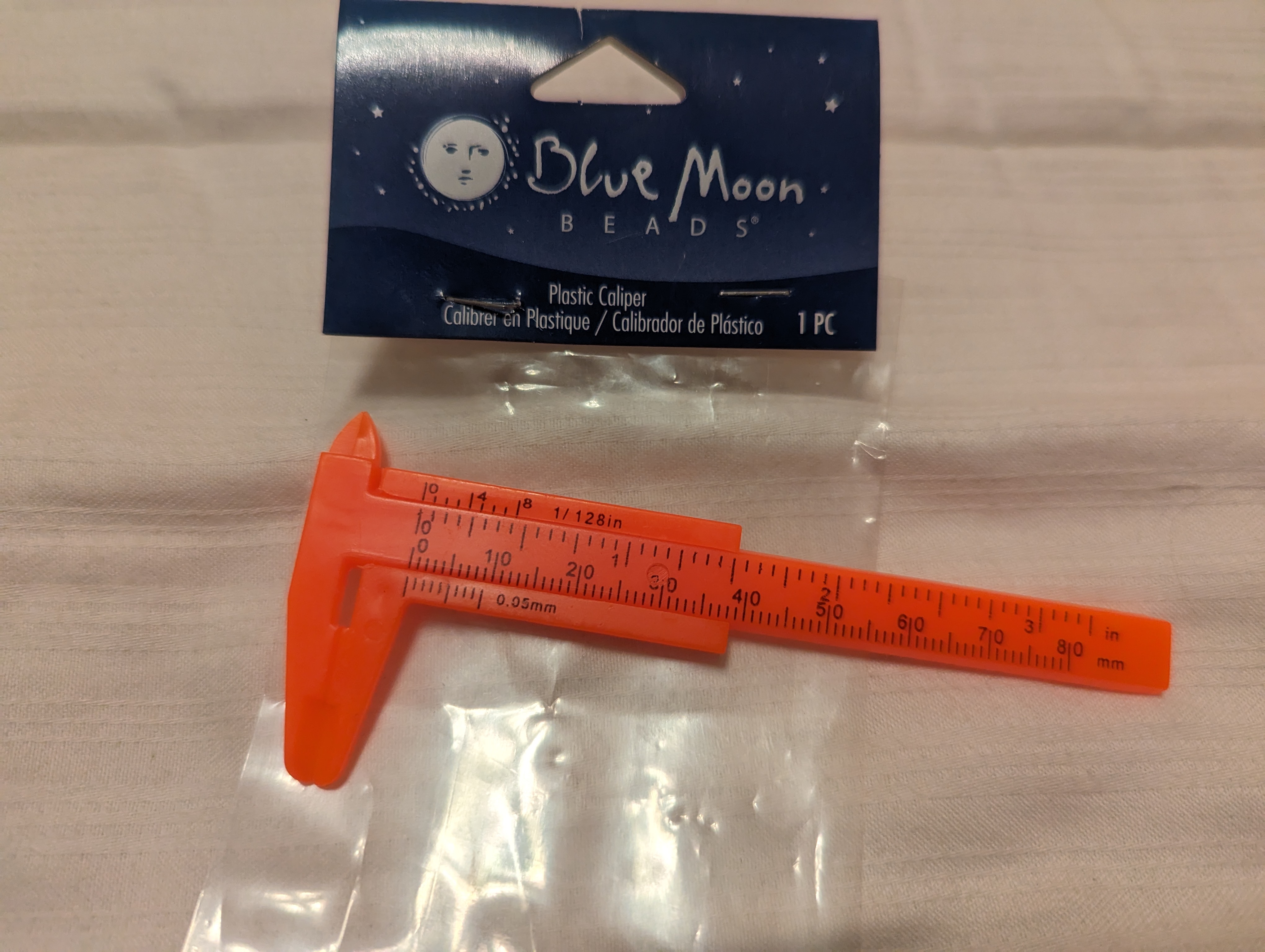
If you aren't keen on these things, notice how there are 9 divisions on the "vernier scale" for 9 divisions on the main ruler, instead of 10 divisions within 9; every single tick mark lines up at once. This is completely useless, and yet they still write 0.05 mm as if it actually does something! Clearly whoever made this has zero idea what a vernier scale is and rather than trying to understand they just put some lines there and wrote the same numbers all the others did. Even if they did the correct divisions, there would only be 9 or 10 marks, meaning 0.1 mm accuracy. They would need to add tick marks in between to get the 0.05 mm accuracy it claims.
The slide also doesn't line up similar to the Amazon pair although I don't have a photo since I threw these out long ago.
What Now?
Permalink to “What Now?”I have looked for replacements but still haven't found a good plastic alternative. I have a brass pair for woodworking without a vernier scale, but even the brass ones that do have two issues: the inside and outside have different 0 points which makes reading difficult, and they often need a small amount of oil to slide smoothly which can transfer to surfaces and stain them. For now I will just have to ration my good pair and try my best not to misplace it.
Back to my blogs